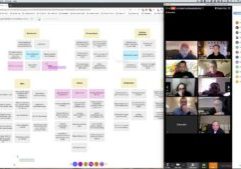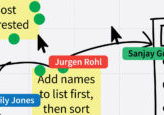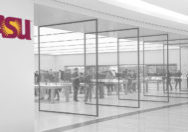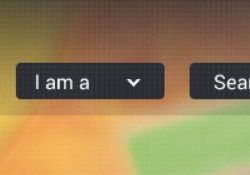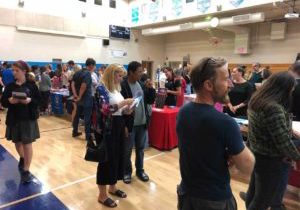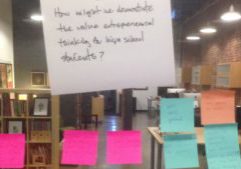One of the reality checks to confront when considering a website redesign is how much work is actually involved. When you step back to look at your entire web presence (or better yet conduct a thorough audit), the scale of the project before you can be overwhelming (ask me how I know).
And yet, you’re also faced with the reality that your outdated website may not be supporting your marketing need to engage with prospective students. So, you’re trapped between the scale of a project that requires too much budget, time, and institutional commitment, and the urgent need to update the website for the upcoming application season, and align the website with your larger marketing efforts. You’d be forgiven for concluding, again, that your university just can’t take this on. What to do?
Content, and the migration of
Let’s start with two of the largest challenges involved in a redesign: getting your arms around your content, and then updating, revising, and migrating your content.
It’s fair to say that the bulk of effort involved in a redesign involves not the actual redesign, or even all of the research, strategy, and creative process that goes into it, let alone the development of code and backend architecture (unless you are swapping/updating your CMS, or otherwise ripping out existing infrastructure). The vast majority of time spent on redesign comes outside of design - it is the auditing, review, editing, and migration of content. And the bulk of that content exists on domains and pages prospective students will never see (and they’re the primary reason you’re redesigning the website, right?) So, consider this approach: redesign and build those parts of the website prospective students need to see now, and then build out the rest of the site over a period of time that fits the capabilities of your institution, not some hypothetical “best practice” that says users will be confused when moving between new and old territory.
And then, consider what actually needs to be done to create a new web presence, crafted primarily for your most important audience - prospective students - and work from there.
First, you should understand, deeply, the journey your prospective students embark upon when navigating your website. Where are they going to learn about your tuition and fees, degree programs, residence life? Is this content very accessible now, with intuitive pathways to it? If not, then rather than let this become just one more reason that this project is too overwhelming, consider adding this content to your new home page experience.
See: The AOLP Project - how a redesign got lean.
Next, plan to develop a prospective student experience that consists of your new home page (with content just for them), and updated pages that serve their journey. These can be current pages or new pages, with new content developed as a part of the redesign project.
Components of a Lean Redesign
Your plan may diverge from this list but as a starting point, consider:
Home Page
As I've said elsewhere, your home page is the place to tell stories – stories about your students and how your school is empowering them to realize their dreams. It's also that place where you get to make a lasting first impression, one that can either plant a seed in your prospective's mind, or list events they're not attending.
Academics
Most prospectives have an idea what they want to major in, even if they also want to remain undecided. So at a minimum show your majors and minors, preferably with an intro into each program – fully developed program pages can (and should) launch with Phase 2.
Admission
A step by step walkthrough of your application process, acceptance stats, dates, what you look for in applicants and, of course, tuition & aid facts and figures are the baseline for an effective Admission landing page.
About
Think about this page from the POV of prospectives and their parents. Sketch a portrait of your typical admitted student: focused, driven, curious and engaged...remember that prospectives want to see themselves at your school and a part of your community, so show them how they'll fit in. Also: show facts and figures like location, year founded, religious affiliation if any, enrollment and diversity.
Campus Life
Residential life, dining, clubs, intramurals and activities...the daily non-academic experience. This is the introduction to your campus lifestyle, something prospectives and parents are very interested in.
Your next task is to understand what it will take to essentially re-skin your existing pages. This can be very straightforward if your current CMS is very adaptable (like WordPress) or somewhat more difficult, and could require specialized development expertise for your specific CMS (looking at you, Cascade). Again, this assumes you’ve determined that your IA is fundamentally sound, or can wait to be updated with the rest of the website in later phases.
But wait, there's more
Speaking of phases, your next task is to diligently map out your roadmap for completing the remainder of the web presence, and marshal the resources required for this project. This is the big, scary part! But it’s completely doable and when done correctly will allow you to launch your new web presence in phases that work for your institution. It will take most of your time and attention during it’s life, but it doesn’t have to be done at once. In fact, the strategy I’m proposing argues against a comprehensive relaunch. Instead, launch new sections in phases, spread out over a timeframe that allows for maximum cost savings by relying less on outside consultant support.
A lean redesign is no substitute for complete, top to bottom redesign, if needed. A modern, comprehensive web presence is your most powerful communication tool. Your community will appreciate how much faster and more efficient information gathering and decision making has become.
But serve your paying customers first.
Also: When a complete, all-at-once redesign is required:
Antiquated information architecture (IA): Is your IA foundation broken? Are users telling you they can’t find anything, or the website is hard to use? If you can demonstrate real lost productivity and opportunities due to user confusion, frustration, and time wasted on unintuitive website usage, by prospective students and community members (administrative staff, faculty, current students, etc.), then it might be best scale up your vision and go big.
Overwhelmed by outdated and redundant content: Has your web presence ballooned into uncountable domains and pages of content that no one owns, and serves outdated, contradictory information, damaging your reputation and your ability to present a cohesive brand? A complete overhaul might not wait.
Transition to a new CMS: If you’re moving to a new CMS, it will likely require a root-and-branch digging up of every single page of your web presence. This is a tremendous opportunity to streamline your content and IA, and improve productivity by eliminating redundant and/or abandoned content, but it is a substantial undertaking to manage this massive transition.

